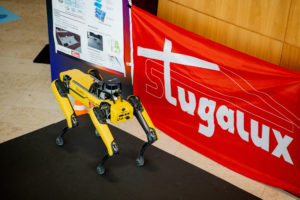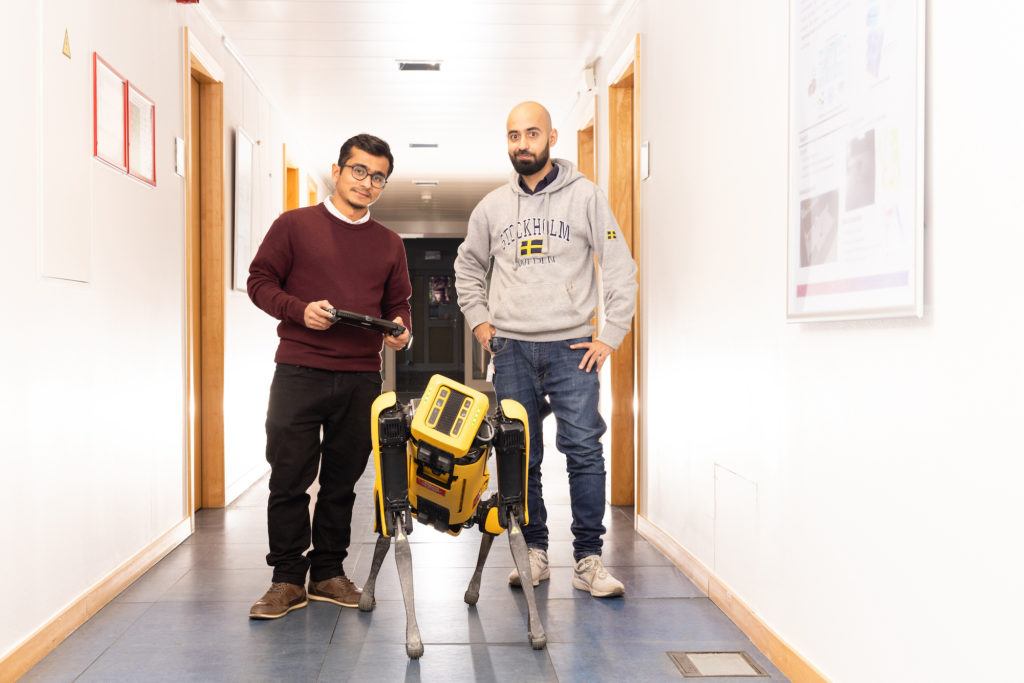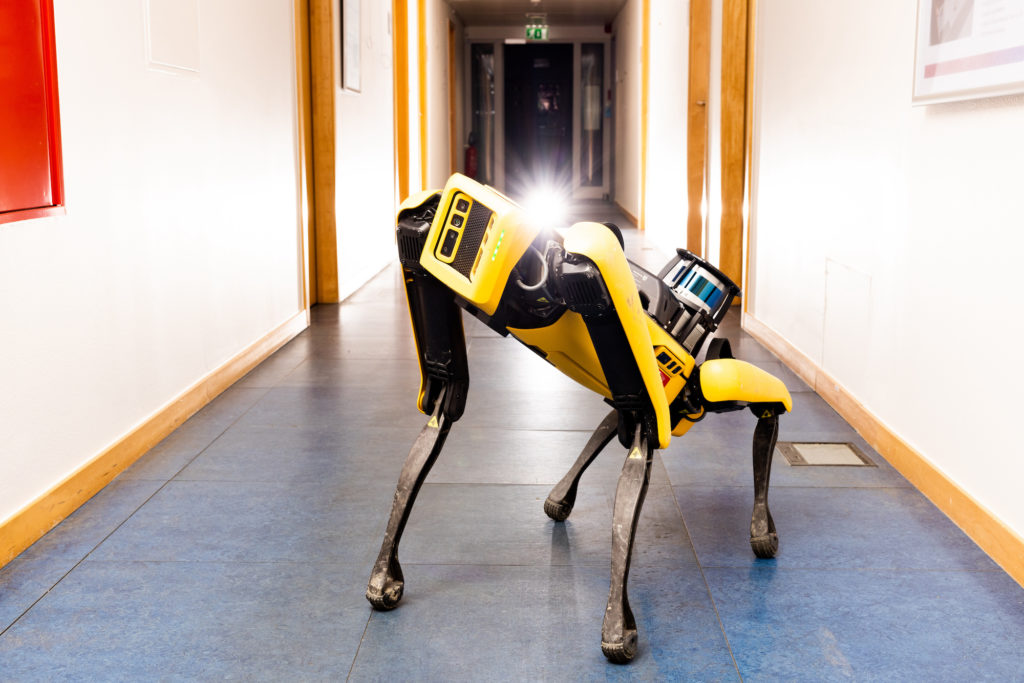Robots are becoming more and more present in our world – and in 2019, American robotics manufacturer Boston Dynamics released one that had the potential to overhaul the construction industry. Affectionately named ‘Spot’, the robot is intuitive and can inspect dangerous or remote environments, collecting data as it goes to feedback along its journey. In 2020, the Luxembourg based construction company, Stugalux, became the first in Europe to purchase the robot – in fact they bought two – and began working with SnT to refine its implementation into Stugalux’s many construction

sites.
The robot oversees construction sites using laser scanners and onboard cameras, which allows it to acquire precise data used by the construction engineers. Rough construction surfaces and even stairs present no obstacle, as it can stabilise itself and even detect obstacles to avoid while walking – instantly moving to the side to avoid. At SnT, the team comprises Muhammad Shaheer, a doctoral candidate, Hriday Bavle, a research associate, and Jose-Luis Sanchez-Lopez, a research scientist, as well as Prof. Holger Voos – as principal investigator and head of the Automation and Robotics research group.
“The goal is to build artificial intelligence that allows the robot to autonomously navigate in a construction site to monitor the construction process”
Jose-Luis Sanchez-Lopez, SnT Tweet

Together, they will provide the robot with the ability to navigate autonomously in the construction site without prior site detection solely based on digital models. The three-year project will add a novel advanced situational awareness skill to the robot, so it is capable of understanding the digital building plans of Stugalux, and localise in the construction site – even in the presence of unknown objects, exclusively relying on the measurements provided by the onboard sensors. Thanks to this essential skill, the partners will be able to develop a solution where the robot can autonomously navigate in a previously ‘unseen’ construction site for data collection. This means the robot will be able to go onto any of Stugalux’s 200 sites in Luxembourg during the night to check the progression of developments according to the project specifications.
“In the case that our construction plans have deviated, we will be able to take early corrective actions. This will prevent costly delays in the development”
Joel Schons, CEO of Stugalux Tweet
“The goal is to build artificial intelligence that allows the robot to autonomously navigate in a construction site to monitor the construction process. Performing autonomously means that the robot will no longer be teleoperated by a person, or it will not need to previously execute and record the walking task,” said Sanchez-Lopez. This intelligence means that the robot will be able to read the digital plans of a construction site, understand where it is located within the site, and autonomously move to acquire the needed data for the project. It will also need to continually learn from its environment, so that it can still navigate when its environment changes.

The research partnership will also seek to make it possible for normal construction personnel to handle the robot and the process of data capturing, instead of solely robotics experts. This means the robot will be more accessible for the property development sector, as it will not require specialist knowledge. When the project is complete, the robot is expected to save time in the construction industry, ultimately reducing project costs. “Having these new features will make data collection on construction sites even more efficient and reliable,” said M. Joel Schons, CEO of Stugalux. “In the case that our construction plans have deviated, we will be able to take early corrective actions. This will prevent costly delays in the development”.
The project officially began its work in January, with the first year expected to focus on testing the current state-of-the-art technology and developing the first ideas of the researchers. The team will work to initially provide an initial solution, so that the robot dogs can begin assessing sites with partial human assistance, and work on a permanent solution that will push the state-of-the-art beyond its current limits over the course of three years.